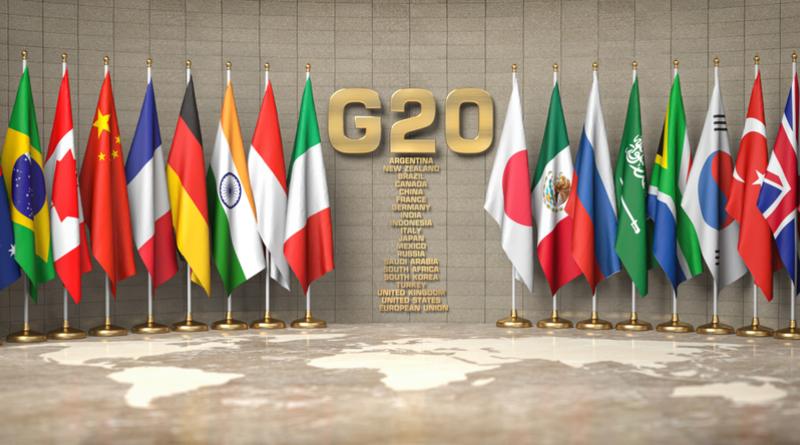India’s G20 presidency is an opportunity for green hydrogen leadership

The global discussion on green hydrogen must not become another gateway for promoting grey or blue hydrogen.
Developing a solid international supply chain for green hydrogen is an urgent priority.
India should push for international technical cooperation in green hydrogen to drive cost reductions and enhance demand.
ndia’s close friend and ally, Japan, first put hydrogen on the G20 agenda during its presidency in 2019. With India taking over the G20 presidency on 1 December 2022, it must seize the opportunity to propel the green hydrogen discussion to new heights.
Hydrogen in G20
Japan, during its presidency, had commissioned the International Energy Agency (IEA) to produce a report on the future of hydrogen. The report concluded that the political and business interest in hydrogen makes it the right time to use hydrogen for storage and to deploy in industries, transport, shipping, aviation, power and storage. It called for long-term policy support to create demand, enhancing research and development for increasing supply and harmonising standards for amplifying utilisation.
Saudi Arabia, during its presidency in 2020, focused on blue hydrogen under its circular carbon economy vision with four Rs – reduce, reuse, recycle and remove. However, blue hydrogen is produced using natural gas with carbon capture, an expensive and underperforming technology. Though Saudi Arabia promoted blue hydrogen in the discussion at the G20, it added value to further recognise hydrogen as an energy carrier and promote international collaboration on hydrogen development and utilisation.
Indonesia switched the focus back to green hydrogen as a key to energy transition and storage during its presidency in 2021. With support from the International Renewable Energy Agency (IRENA), Indonesia held a panel discussion and investment forums to enhance the understanding of clean hydrogen and its role in the energy transition in Southeast Asia.
In addition, at the Business20 (B20) Summit, Indonesia’s national energy company Pertamina Power, Singapore-based Keppel Infrastructure and US-based energy giant Chevron signed a joint study agreement to explore the development of green hydrogen projects in Sumatra, Indonesia.
Scope for hydrogen in India
India currently uses about 6 million tonnes (MT) of grey hydrogen, or hydrogen produced using fossil fuels, annually. This consumption comes from ‘hard-to-abate’ sectors, such as refining, fertiliser, steel and methanol, which are low-hanging fruit when it comes to shifting to green hydrogen.
The influx of renewable energy planned through to 2030 makes India primed to enhance its green hydrogen consumption. Accordingly, the government has set a target of 25MT annual production by 2047.
According to the NITI Aayog and RMI, adopting green hydrogen in the country could cut carbon emissions by 3.6 gigatonnes and energy imports by at least US$246 billion by 2050. Reliance on grey hydrogen for producing fertiliser has resulted in a massive annual subsidy burden of over Rs1 trillion (close to US$12 billion at the current exchange rate). The subsidy is expected to cross Rs2 trillion for the current fiscal. This would be an easy fiscal expenditure to cut with a switch to green hydrogen. It would also lower India’s energy security risks which have been exacerbated by COVID-19 and geopolitical disturbances in recent times.
Conducive policies to support green hydrogen growth
India launched the National Hydrogen Mission in 2021 to enhance green hydrogen production and consumption in the country. On 17 February 2022, the Ministry of Power unveiled India’s much-awaited first green hydrogen policy. The policy provides concessions on inter-state transmission charges, banking charges, land acquisition and access for purchasing renewable energy.
Additionally, the government is looking at setting up dedicated manufacturing zones for green hydrogen and ammonia to boost availability. The Karnataka state government initiated the first green hydrogen cluster this year near Mangaluru port and will develop the project stages over five years.
Meanwhile, the central government is also expected to introduce production incentives for the manufacturing of electrolysers.
G20 countries with hydrogen strategies
Many G20 countries announced green hydrogen policies in 2020, including Canada, the U.S., Italy and Germany.
France, Australia, Korea and Japan were ready with their hydrogen roadmaps in 2019. In fact, Japan had already formed a basic hydrogen strategy in 2017. The United Kingdom, Russia and South Africa unveiled their hydrogen roadmaps in 2021. Brazil and Argentina prepared low-carbon hydrogen strategies in 2022.
The European Union adopted its hydrogen strategy in 2020, focusing on enhancing domestic production while planning to import 10MT of hydrogen by 2030. China unveiled its first long-term hydrogen plan in 2022 with a target of 200,000 tonnes of green hydrogen by 2025.
These strategies aim to ensure that clean hydrogen advances quickly in all countries, either through production or imports. A common thread across these G20 countries’ hydrogen roadmaps and strategies is the idea of enhanced international cooperation and engagement. Countries are keen on developing harmonised international certification schemes and guarantee of origin schemes to enable international trading of green hydrogen and strategic investments in clean hydrogen.
Other G20 countries, such as Turkey, are in the process of developing a hydrogen policy. Mexico and Indonesia are increasingly pushing for green hydrogen but do not yet have a roadmap or strategy.
On the other hand, Saudi Arabia has an industrial strategy for hydrogen that looks to produce blue hydrogen to the tune of 2.9MT per year by 2030.
India must drive hydrogen discussion
The years to 2030 are critical for green hydrogen’s development trajectory. India, with its green hydrogen leadership ambitions, can influence the pace and direction of the hydrogen agenda during its G20 presidency.
In its agenda, India must ensure that the global discussion on green hydrogen does not become another gateway for promoting grey or blue hydrogen, which would link the cost of production to high and volatile gas prices. In addition, developing a solid international supply chain must also be an urgent priority.
India should also push for international technical cooperation in green hydrogen to help drive cost reductions and enhance demand. Furthermore, India should look at exploring bilateral cooperation on the sidelines of the G20, similar to the recently executed France-India hydrogen roadmap, where the focus is on developing a reliable supply chain. Finally, like in many other clean energy areas, India must take the G20 presidency as an opportunity to establish leadership in green hydrogen.
This commentary first appeared in Renewable Watch.
Purva Jain
Purva Jain is an energy analyst and guest contributor at IEEFA. She has more than eight years’ experience in the energy and development sectors. Her areas of policy interest include renewable energy, climate change, energy subsidies, electric vehicles and sustainable development.






